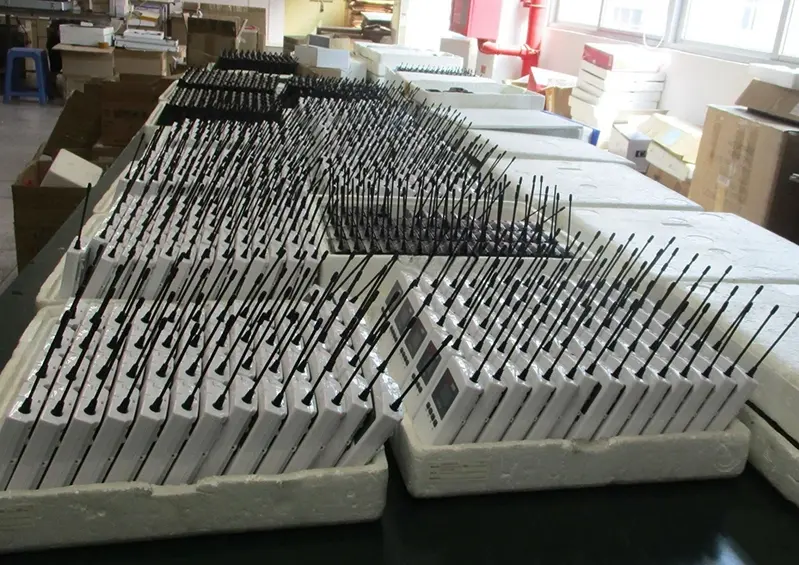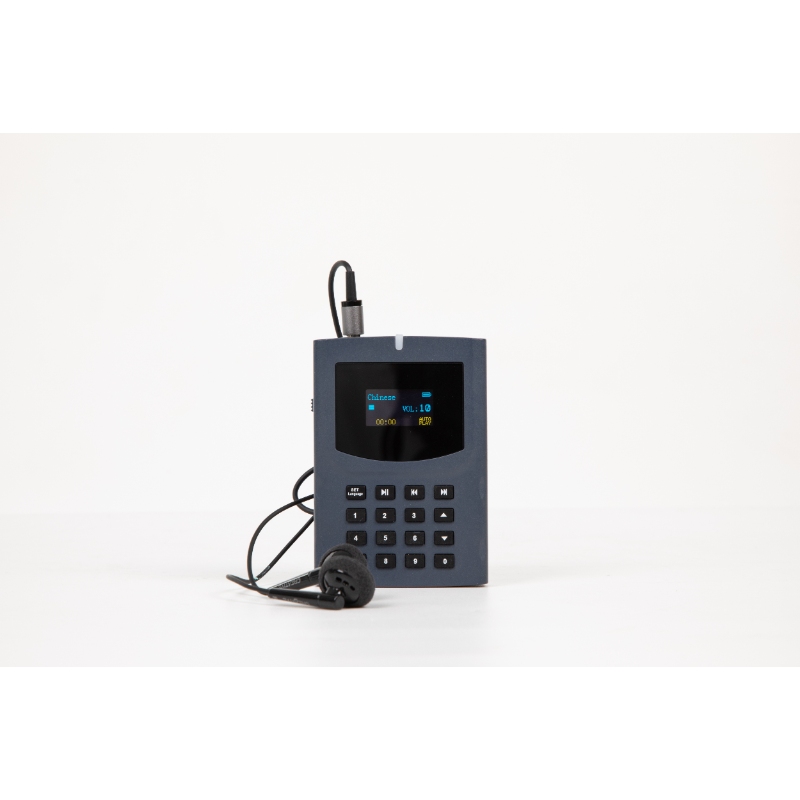Museum Automated Audio Guides: Revolutionizing the Visitor Experience
Release time: 2025-07-18
In today’s technology-driven world, museums are continuously finding innovative ways to enhance their visitor experience. One of the most effective solutions to engage audiences is through museum automated audio guides. These audio systems not only provide educational value but also ensure that visitors enjoy a personalized and immersive experience. In this article, we’ll explore the significance of audio guide systems for museums, how they work, and how you can purchase them in bulk for your institution.

What Are Museum Automated Audio Guides?
Museum automated audio guides are handheld devices or mobile apps that provide audio commentary about exhibits and artifacts. These systems offer visitors a self-paced, informative, and engaging way to learn about a museum’s collections. Unlike traditional guided tours, automated audio guides allow for flexibility and personal exploration, which enhances the overall museum visitor experience.
These guides typically function using RFID (Radio Frequency Identification) or GPS (Global Positioning System) technologies to deliver contextually relevant information as visitors move through different areas of the museum. Some audio guides are offered through dedicated devices, while others are available as mobile app-based audio guides that visitors can download on their smartphones.
Benefits of Museum Automated Audio Guides
1. Enhanced Visitor Experience
Automated audio guides transform a regular museum visit into a highly engaging experience. With real-time audio explanations and multimedia content (videos, images), visitors can dive deeper into each exhibit and gain a richer understanding of the history, context, and significance of the pieces on display.
2. Multilingual Capabilities
One of the major benefits of automated audio guide systems is the ability to offer content in multiple languages. This is especially important for museums that attract international visitors. Multilingual audio guides can break down language barriers, making it easier for diverse audiences to enjoy the exhibit and understand the information.
3. Flexibility and Self-Paced Exploration
Unlike guided tours, where visitors must adhere to a set schedule, automated audio guides give individuals the flexibility to explore exhibits at their own pace. They can pause, rewind, or skip over certain sections, creating a more personalized and enjoyable experience.
4. Cost-Effective and Scalable
In contrast to hiring human guides, audio tour systems for museums offer a cost-effective solution. They can be used by large numbers of visitors without requiring additional staff. This is a scalable option for museums looking to reduce operational costs while still offering a premium service.
5. Real-Time Content Updates
Many modern automated audio guides allow museums to easily update their content. Whether you have temporary exhibits or new information to share, audio guide systems for museums can be updated remotely, ensuring that your content is always fresh and relevant.
6. Accessibility Features
Automated audio guides can also be tailored to meet the needs of visitors with disabilities. For example, audio descriptions can be provided for those with visual impairments, and sign language support can be integrated for the hearing impaired. This makes museums more inclusive and accessible to a wider audience.
How to Purchase Museum Automated Audio Guides in Bulk
If you manage a museum or cultural institution and are interested in purchasing audio guides in bulk, it’s important to understand the key steps to ensure that you’re getting the best system for your needs. Below are some practical steps for making an informed bulk purchase:
1. Assess Your Needs and Requirements
Before reaching out to suppliers, it’s essential to evaluate your museum’s needs. Consider factors such as:
- Museum Size: Larger museums with many exhibits might require more advanced systems.
- Visitor Demographics: Do you cater mostly to tourists, school groups, or local visitors? This will help determine language options and educational features.
- Budget: Setting a clear budget helps narrow down options without compromising quality.
2. Research Potential Suppliers
Several companies specialize in museum audio guide systems, each offering different features and technologies. Leading suppliers include:
- MixTech: Known for next-generation automatic tour guide systems, MixTech offers a range of customizable solutions tailored to museums of all sizes. Their systems support both dedicated devices and mobile app-based audio guides, along with real-time updates and multilingual support.
3. Request Bulk Pricing Quotes
When considering a bulk purchase, it’s important to reach out to suppliers for pricing quotes. Bulk orders usually come with discounts, so it’s worth negotiating for the best deal. Provide the supplier with details about the number of devices you need, the type of features you require, and any specific technological preferences.
4. Evaluate the Product with a Trial
Before making a significant investment, request a demo or trial period. This allows you to test the functionality, ease of use, and sound quality of the audio guides. It also gives you a chance to test the systems in real-life museum settings.
5. Consider After-Sales Support
When investing in automated audio guide systems for museums, make sure the supplier offers robust after-sales support. This includes maintenance, software updates, and troubleshooting assistance. Additionally, check if the supplier provides training for your staff to ensure smooth operations.

Conclusion: A Modern Solution for Museums
Museum automated audio guides have become an essential tool for museums worldwide. They provide an interactive, multilingual, and accessible experience for visitors, making exhibits more engaging and educational. Whether you’re looking for dedicated audio guide devices or mobile app-based systems, these solutions offer flexibility, cost-efficiency, and scalability.
When purchasing audio guides in bulk, ensure that you thoroughly research suppliers, evaluate your specific needs, and test the product before making a final decision. By doing so, you’ll not only enhance your visitors’ experiences but also invest in a sustainable, high-quality solution for your institution.


